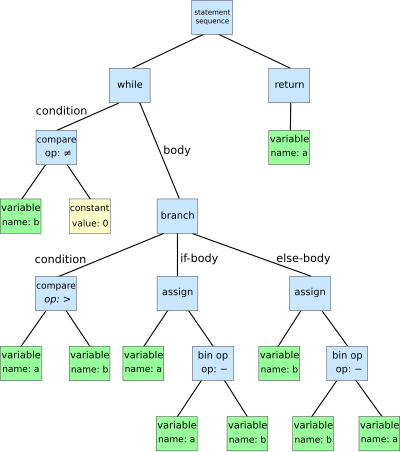https://en.wikipedia.org/wiki/Abstract_syntax_tree
https://en.wikipedia.org/wiki/Parse_tree

citation:
Left Hand Side vs. Right Hand Side
For example, in a = b + c, we evaluate the value of b and c, add them together, and then associate or store the result in a. Here b and c have the context that we call right hand side — b and c are on the right hand side (of an assignment), whereas a has left hand side context — a is on the left hand side of an assignment. We need the value of b and c yet the location of a to store the result.
A complex left hand side expression will itself also involve some right hand side evaluation. For example, a[i] = 5 requires evaluting a and i as values (as if right hand side) and only the array indexing itself is evalutated as left hand side (for storage location). 5, of course, is understood as right hand side.